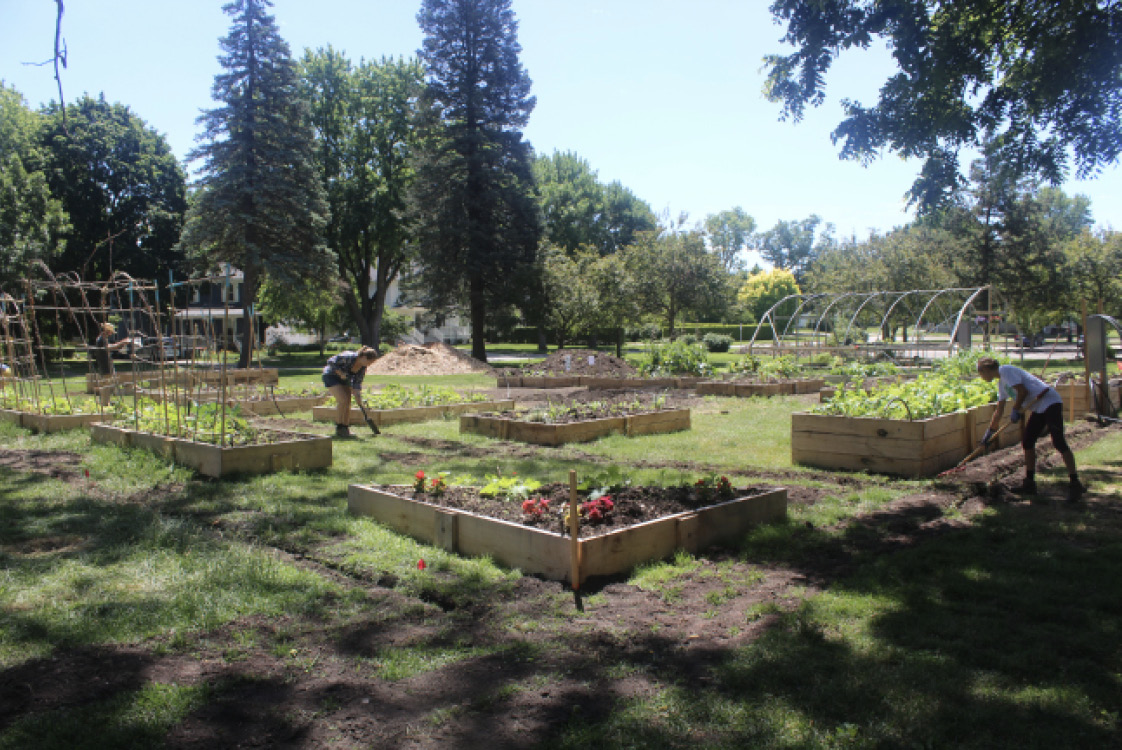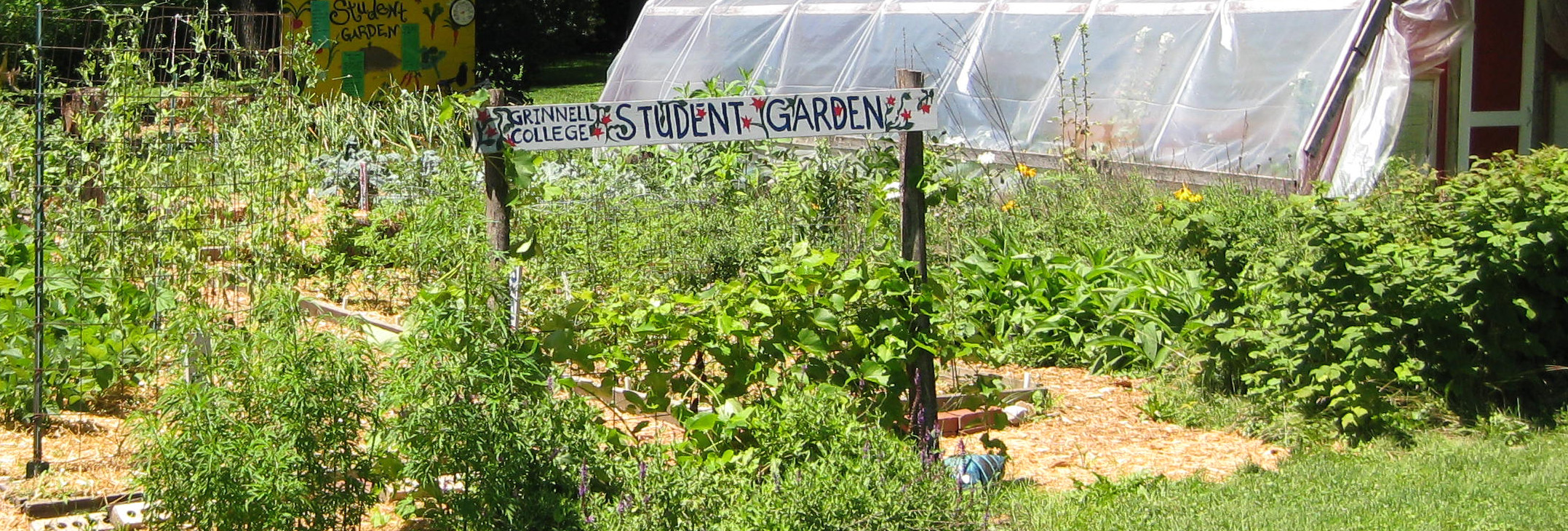In the last ten months I have devoted countless hours of my time to a tiny piece of real estate on the southeast edge of the Grinnell College campus. There was not much there ten months ago: a few crab apple trees on the south side, a few pines on the north side, a large walnut tree on the west side, and a forlorn looking lawn in the middle, about six-tenths of an acre. There had been a house there once. But if one looked at the space with imagination one could see wonderful possibilities. And that’s how I had to look at it because it was the space the college said the Center for Prairie Studies could use for the new college garden. The old garden site had served us reasonably well since 2001. We had numerous garden beds, a shed and a greenhouse, a barrel to catch rain water off the roof of an adjacent college house, and a sentimental attachment to the location by way of the sweat equity that a series of student summer interns and I had put into it. But the site was being repurposed, and we had to relocate the garden.
Fast forward ten months and be amazed, as I have been, at what we have accomplished. The operative word in the preceding sentence is “we.” So many people have helped. The parents of two current students from Minnesota donated two inch thick white oak lumber for building raised beds. A local farmer donated impossibly rich compost with which we filled the beds. Seed Savers Exchange, in Decorah, Iowa, donated vegetable seeds and starts. Other farmers from east central Iowa donated more starts. The college’s Facilities Management department donated a hoop house frame. The college’s wonderfully talented environmental research station technician designed and led the installation of a drip irrigation system and, as I write, is organizing us to finish the hoop house. Current students (a few of them paid assistants) alumni, faculty, staff, and community members contributed time and energy to build twenty-one raised beds (three of them in compliance with the Americans with Disabilities Act) plant 30 varieties of produce, and weed, water, and harvest. Neighbors have come by to chat or to deliver their own food waste to our compost bins.
Creating the garden has involved an inspiring display of community spirit. Community is one of the trio of concepts at the core of the Center for Prairie Studies’ mission The others are sustainability and place. Our vision for the garden is to create a place where we can nurture community around sustainably produced food. In the just-completed first growing season, we harvested over 700 pounds of produce, most of which went to the college’s Dining Services for many more people to enjoy.

Grinnell College’s new Community Garden. Photo courtesy of Jon Andelson.


